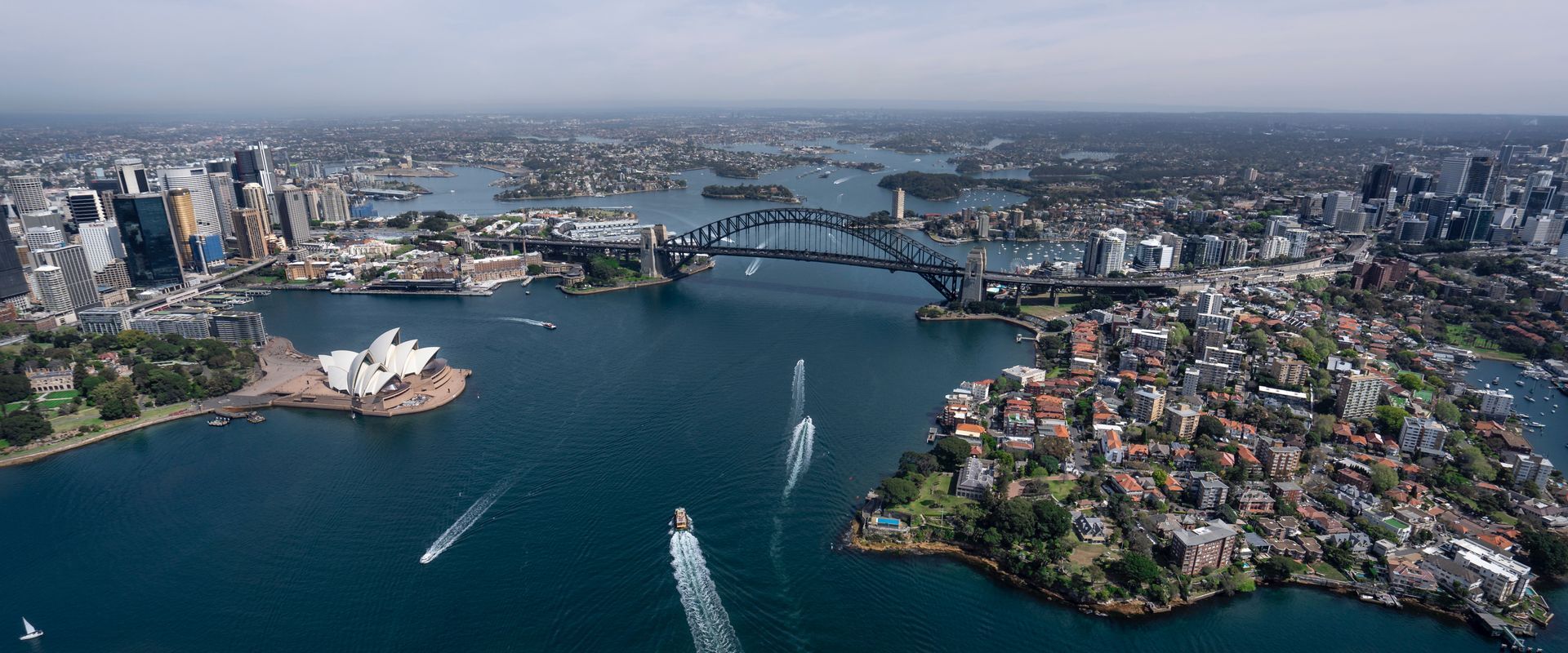Move to Australia Permanently vs Temporarily for Work
Jason Mueller • September 17, 2023

Australia, known for its stunning landscapes, diverse wildlife, and vibrant cities, has long been an attractive destination for individuals seeking new opportunities. Many people consider relocating to Australia for work, whether it's a temporary assignment or a permanent move.
Understanding Temporary Work Migration
Temporary work migration plays a significant role in Australia's labor market. The country offers various visa options for skilled workers, including the Temporary Skill Shortage visa (subclass 482), the Working Holiday visa (subclass 417), and the Temporary Graduate visa (subclass 485). These visas allow individuals to live and work in Australia for a specified period, which can range from a few months to several years, depending on the visa type.
The Working Holiday visa is popular among young adults, typically aged between 18 and 30, who wish to combine work and travel experiences. It allows them to work for up to six months with each employer and offers an opportunity to explore Australia's diverse regions. Similarly, the Temporary Graduate visa allows recent international graduates to gain practical work experience related to their field of study.
In recent years, the Temporary Skill Shortage visa has become increasingly prominent, attracting skilled workers from around the world. This visa is designed to address skill shortages in specific industries and allows employers to sponsor overseas workers temporarily. It offers a pathway for skilled individuals to contribute to the Australian workforce and gain valuable international work experience.
Temporary work migration provides a range of benefits for both individuals and the Australian economy. It allows businesses to address labor shortages in sectors where there is a demand for specific skills. Additionally, temporary workers often bring diverse perspectives, knowledge, and expertise that contribute to innovation and cultural exchange within the Australian workplace.
Permanent Work Migration in Australia
Australia's permanent work migration program is primarily designed to meet long-term skill needs and foster economic growth. The General Skilled Migration program is a popular pathway for individuals with in-demand skills and qualifications. It includes visas such as the Skilled Independent visa (subclass 189), the Skilled Nominated visa (subclass 190), and the Skilled Work Regional (Provisional) visa (subclass 491).
The Skilled Independent visa is for skilled workers who are not sponsored by an employer, a state, or a family member. It requires meeting specific points-based criteria, including occupation, age, English language proficiency, and work experience. The Skilled Nominated visa and the Skilled Work Regional visa require sponsorship by an Australian state or territory government.
Apart from the General Skilled Migration program, other pathways to permanent work migration include employer-sponsored visas such as the Employer Nomination Scheme (subclass 186) and the Regional Sponsored Migration Scheme (subclass 187). These visas enable employers to sponsor skilled workers to fill positions that cannot be filled by the domestic workforce.
But what factors influence migration patterns?
Several factors influence the choice between temporary and permanent work migration to Australia. One key factor is the duration of the employment opportunity. Individuals seeking short-term experiences, such as working holidays or gaining international exposure after completing their studies, often opt for temporary work migration. On the other hand, those looking for long-term stability and opportunities for career progression may choose permanent work migration.
The demand for specific skills in the Australian labor market also plays a crucial role. Temporary work migration programs, such as the Temporary Skill Shortage visa, address immediate skill shortages in industries such as healthcare, engineering, and information technology. Conversely, permanent work migration programs cater to long-term skill needs, with a focus on occupations that contribute to economic growth and development.
Personal circumstances and aspirations also influence migration decisions. Factors such as family ties, lifestyle preferences, and future prospects may sway individuals towards either temporary or permanent work migration. Additionally, the visa requirements, including language proficiency and age limits, may influence the eligibility of individuals for specific migration pathways.
Furthermore, economic factors such as job opportunities, wage levels, and the overall strength of the Australian economy impact migration patterns. Australia's robust economy, with sectors like mining, healthcare, and technology experiencing growth, attracts individuals seeking better career prospects and higher standards of living. The availability of job opportunities and competitive wages can be influential factors in individuals' decisions to migrate to Australia for work.
Government policies and regulations also shape migration patterns. Changes in visa requirements, the introduction of new visa programs, and adjustments to occupation lists impact the number and type of individuals migrating to Australia for work. Government initiatives to attract and retain highly skilled professionals through incentives and streamlined visa processes can influence migration decisions.
So what’s the right move for me?
In Australia, both temporary and permanent work migration contribute to the country's economic growth and diversity. Temporary work migration addresses short-term skill shortages and allows individuals to gain international work experience. Permanent work migration, on the other hand, focuses on attracting skilled workers who can contribute to Australia's long-term development.
The Australian government has implemented various visa programs to facilitate these migration pathways, ensuring that skilled workers can contribute to the country's workforce and economy. Whether individuals choose to move to Australia temporarily or permanently for work, they become part of a dynamic and multicultural society that embraces diversity and provides ample opportunities for personal and professional growth.
By understanding the factors that influence migration patterns, both individuals and policymakers can make informed decisions that benefit both the migrants and the host country. Australia's commitment to attracting skilled workers through both temporary and permanent migration programs underscores its reputation as an inclusive and progressive nation that welcomes talent from around the world. As migration trends continue to evolve, it is crucial to maintain a balance between temporary and permanent work migration to meet the dynamic needs of the Australian labor market and ensure sustainable economic growth.
Resources to help with your move to Australia
- Pack, move and unpack your furniture with extra care with Three Movers reliable affordable services. Learn more and start your move today: https://threemovers.com/australia-international-moving-companies/
- Looking for some extra guidance and support on moving over to Australia on your working holiday? Learn more at: https://aussieworkingholiday.com/
- Explore our jobs in Australia, NZ, and the UK, and find the job you love: www.people2people.com.au
Find the job you love I Find the right talent
Get in touch with people2people
Australia
I
United Kingdom
In business since 2002 in Australia, NZ, and the United Kingdom, people2people is an award-winning recruitment agency with people at our heart. With over 12 offices, we specialise in accounting and finance, business support, education, executive, government, HR, legal, marketing and digital, property, sales, supply chain, and technology sectors. As the proud recipients of the 2024 Outstanding Large Agency and Excellence in Candidate Care Awards, we are dedicated to helping businesses achieve success through a people-first approach.






